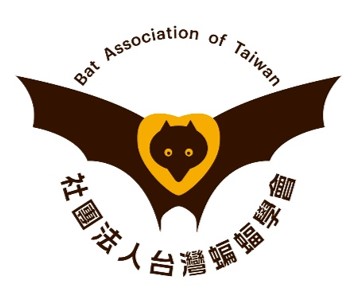蝙蝠研究
2020_玄彩蝠幼蝠的回聲定位前驅叫聲發展及其功能之探討_羅文妏
出版年份:2020
研究生:羅文妏
分類:碩士論文
題目:玄彩蝠幼蝠的回聲定位前驅叫聲發展及其功能之探討
Title:Development and Function of Pups’ Echolocation Precursors in Kerivoula furva
摘要:
蝙蝠利用聲音作為定位導航、覓食及溝通的工具,其聲音包括社會叫聲(social calls)及回聲定位叫聲(echolocation calls),而此兩種聲音分別是由幼蝠的分離叫聲(isolation calls)及回聲定位前驅叫聲(echolocation precursors)發展而來。在群居生殖的蝙蝠群中,為了避免錯誤的親代投資,母蝠必須具有辨識自己仔蝠的能力,許多研究指出幼蝠的分離叫聲具有個體的差異能提供親子辨識。然而,回聲定位前驅叫聲在成長過程中,是否也具有親子間溝通的功能,相關研究闕如。本研究以臺灣中部烏石坑地區、以芭蕉新生捲葉為棲所的群居性玄彩蝠(Kerivoula furva)族群為研究對象,首先利用重複捕捉已知年齡幼蝠的前臂長變化來建立前臂長生長曲線,作為未知年齡幼蝠的年齡估算標準,接著側錄不同日齡幼蝠所發出的聲音,了解幼蝠發育過程的聲音發展,並利用統計方法檢測來自同一棲息群幼蝠的回聲定位前驅叫聲之聲音特徵值是否具有個體差異,最後透過回播試驗(playback experiment)播放仔蝠及非仔蝠的聲音,搭配行為觀察來驗證「玄彩蝠幼蝠的回聲定位前驅叫聲具個體差異,且可做為親子辨識信號」的假說。研究結果顯示,幼蝠前臂長之生長曲線方程式為y=0.5678x+16.802 (R2=0.95)(x為日齡,y為前臂長),藉此提供未知年齡幼蝠個體的年齡估算依據,且可作為後續聲音發展之日齡標準。玄彩蝠幼蝠在出生當日便會發出分離叫聲及回聲定位前驅叫聲,兩者的音波結構有所不同,但其聲音發展趨勢皆為隨日齡增加,音波持續時間下降、頻率特徵值上升。來自同一棲息群的幼蝠,其回聲定位前驅叫聲在聲音特徵參數上,具有統計上顯著的個體差異。回播試驗結果顯示,母蝠能準確分辨環境背景音及幼蝠回聲定位前驅叫聲,但對於自己仔蝠及非仔蝠的準確辨識率則無顯著差異。進一步分析發現,新手母蝠及具經驗母蝠對仔蝠聲音之成功辨識率具差異,顯示生殖經驗會提升母蝠對於仔蝠回聲定位前驅叫聲的辨識能力。僅以具經驗母蝠資料進行分析,結果顯示母蝠對自己仔蝠的準確辨識率顯著高於非仔蝠。綜合上述研究結果顯示,玄彩蝠幼蝠的回聲定位前驅叫聲具個體差異,可作為具生殖經驗母蝠辨識仔蝠之機制。本研究推測玄彩蝠幼蝠的回聲定位前驅叫聲可能並非親子辨識的主要機制,但其個體差異,能夠輔助有經驗的母蝠用來辨識仔蝠。本研究結果有助於我們了解蝙蝠幼蝠聲音的發展及其功能。
Abstract:
Echolocating bats use acoustic signals to orient, forage and communicate. Bats emit two major types of acoustic signals in terms of function: social calls and echolocation calls; these two types of vocalizations, respectively, are derived from pups’ isolation calls and echolocation precursors. Many bats are gregarious, and pups are often born during a short period of time. To prevent misdirect parental investment, mother bats must have the ability to recognize their own offspring. Many studies have shown that the isolation calls of pups contain individual characteristics and can be used for mother-offspring recognition. However, little is known about whether the precursors of echolocation calls (echolocation precursors) provide communication functions during the postnatal growth. In this study, I targeted free-ranging Kerivoula furva in Wushikeng area, central Taiwan. In the study area, K. furva form small groups and use furled plantain leaves as day roost. I aimed to test the hypothesis that “echolocation precursors can serve as a cue for mother-offspring recognition.” First, I created postnatal growth equation for forearm length through capture-recapture of known-aged pups. Secondly, I described the ontogeny of vocalizations and used a univariate analysis to examine if pups from the same roost group demonstrate individual variations in parameters of echolocation precursors. Finally, I performed playback experiments to observe the behaviors of mother bats in response to echolocation precursors from offspring and non-offspring. The postnatal growth equation for the forearm length is y=0.5678x+16.802 (R2=0.95). Pups emitted both isolation calls and echolocation precursors on the day of birth; although the two types of calls differed in structure, there was a trend that in both call types the call frequency increased but pulse duration decreased as pups aged. The univariate analysis showed that the parameters of echolocation precursors differed significantly among pups that roost together. The playback results showed the mother bats could distinguish echolocation precursors of pups from background noises. The accurate recognition rate between echolocation precursors of offspring and non-offspring, however, was not significantly different. Further analysis showed that mother bats with reproduction experiences had a significantly higher accurate recognition rate than primiparous mothers. When only data of bats with reproduction experience were used, bats exhibited a significantly higher accurate recognition rate to their offspring than non-offspring. This study showed that echolocation precursors of K. furva pups contained individual signature, which could be used for experienced mothers to recognize their offspring. This study suggests that echolocation precursor is likely not the primary mechanism for mother-offspring recognition in K. furva; the individual variation in echolocation precursors, however, is sufficient for multiparous mothers to identify their offspring. The results provide better understanding of the development and function of vocalizations in bats.
